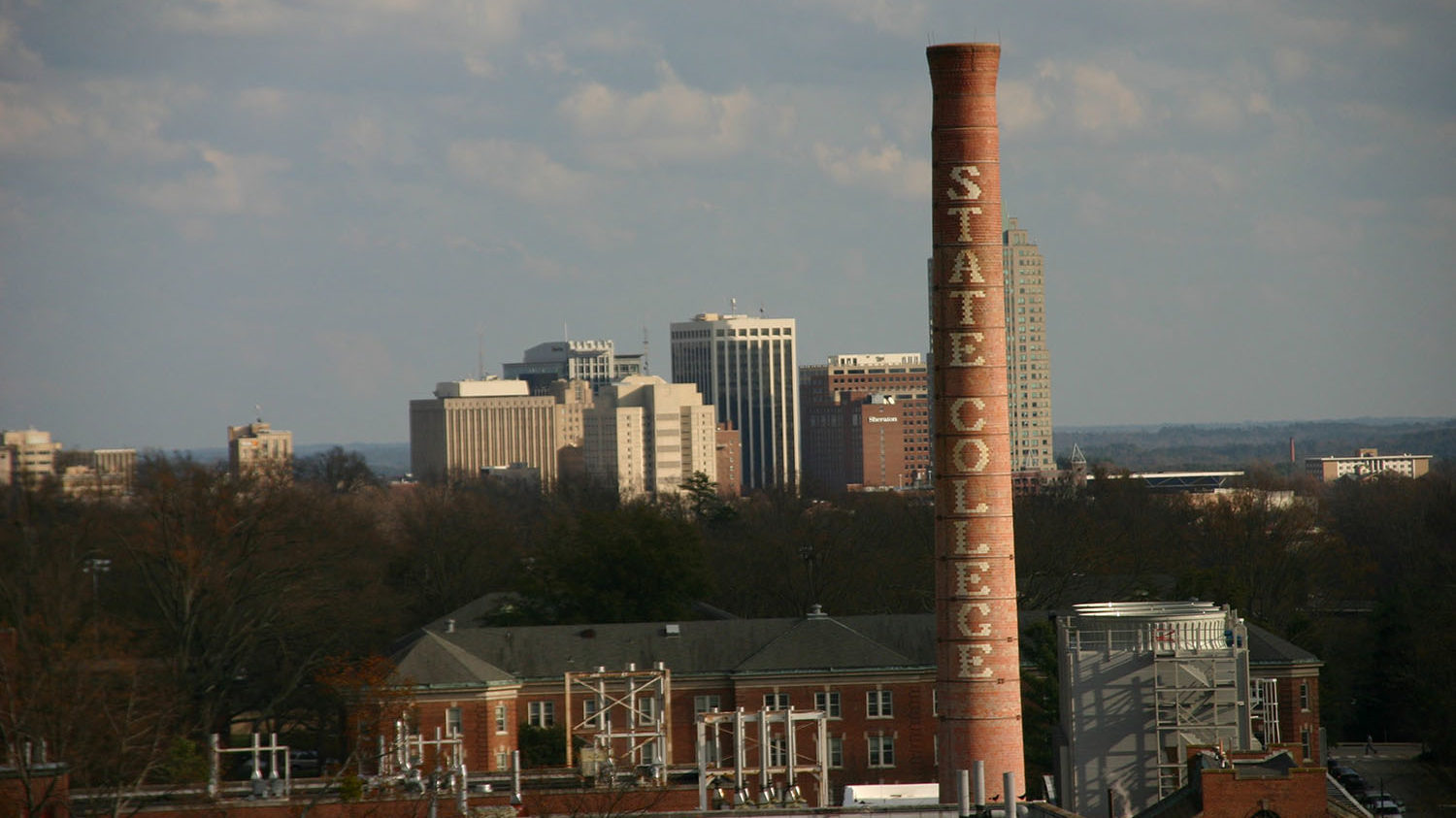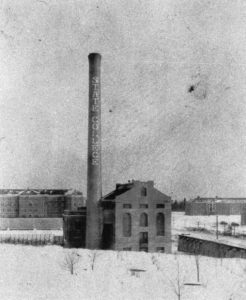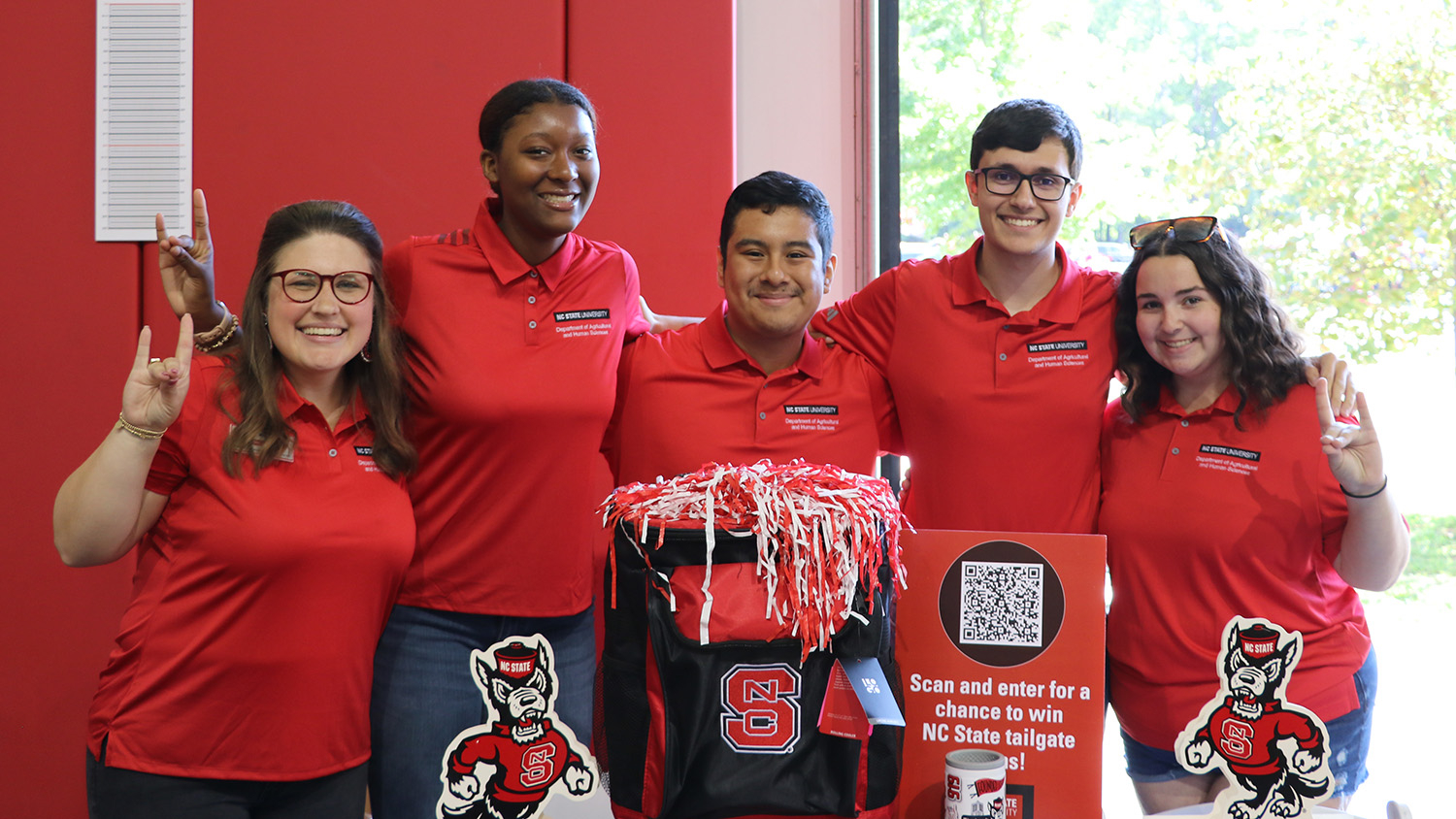Twists and Turns of Naming NC State

What’s in a name? Quite a lot, when it comes to NC State University, where name changes over the years created controversy and angst among supporters. But the desire to be “State College” took hold, and alumni never looked back. Public history graduate student Anna Spencer examines the twists and turns of naming NC State and how graduate studies factored into the decisions.
In the 1880s, a group of influential North Carolina men formed the Watauga Club to lobby for an institution of higher education that focused on the needs of the average North Carolinian. They argued that the state needed an institution focused on technical education, which the University of North Carolina (UNC) — the state’s institution in Chapel Hill — was not meeting. After securing land-grant funds from the Second Morrill Act along with state and private funds, plans were put into action for a college based in Raleigh and focused on technical skills.
The North Carolina College of Agriculture and Mechanic Arts, now NC State University, opened its doors to a freshman class in October 1889. Over the next century, the college became a university and underwent four name changes to reflect its changing focus and status.
In the two decades following the opening of the college, NC State expanded the types of degrees offered and calling the school solely a college of agriculture and mechanic arts no longer fit. Due to the growing popularity of engineering degrees, the college changed its name to “North Carolina College of Agriculture and Engineering.” While students and alumni understood the necessity of the switch, choosing a nickname for the college stirred up a lot of bad blood. Students and alumni favored the nickname “State College,” putting them at odds with administration and the Farmers’ Union in North Carolina who wanted the nickname “A & E.”
It was important to the Farmers’ Union to keep “agriculture” in the nickname. They felt that State College was not as comprehensive as A&E. Students and alumni met this with disapproval, as they had already been referring to the college as State College informally for years. The senior class president sent a letter to Dr. Clarence Poe, advocating for State or State College as the nickname. He was supported by the rest of the student body, through a unanimous vote at an indignation mass meeting in March 1917. The class president listed multiple reasons to adopt the nickname of State, or at least allow alumni and students to vote on the matter. The nickname of State College would follow a trend occurring around the country, where land-grant colleges were also known as State colleges. Because many land-grant colleges were also known as State colleges, the nickname would be enough to let people know it was an agriculture and engineering school.

Mirroring the growth of the college, enrollment of graduate students also increased. In 1923, the college created the Graduate School to manage the growing number of graduate students. The Graduate School differed from other programs in the state and region, because of its focus on agriculture and technical education. The Graduate School’s mission echoed that of the college, which was making a name for itself as one of the foremost agriculture and engineering colleges in the South.
In 1931, the University of North Carolina, North Carolina State College, and the North Carolina College for Women in Greensboro came together to form the Consolidated University of North Carolina. To reflect the changes of the university structure, all three schools underwent name changes. The University of North Carolina became the University of North Carolina at Chapel Hill. North Carolina State College of Agriculture and Engineering became North Carolina State College of Agriculture and Engineering at Raleigh. The North Carolina College for Women became the Woman’s College of the University of North Carolina at Greensboro. While consolidation brought positive changes to all three schools, many at NC State worried that the needs of UNC would come before their own.
The consolidation of the universities created a lot of changes for the Graduate School at NC State. While NC State still offered graduate work, it was monitored by the Consolidated University Graduate School. An associate dean represented each college in the system. NC State’s Associate Dean of the Consolidated University Graduate School Zeno P. Metcalf was not very involved in graduate education at NC State.
The graduate education officials at the Consolidated University, headquartered at UNC, had to approve of degrees and changes to graduate programs offered at NC State. Many of the officials graduated from or were associated with UNC, and were skeptical of an agriculture school’s ability to grant degrees at the graduate level. For a period in the 1940s, the Consolidated University ruled that doctorate degrees could only be conferred at UNC. Students doing all of their coursework at NC State were unable to walk in NC State’s graduation, creating tension between UNC officials and NC State faculty and students. In 1947, the Consolidated University allowed NC State doctoral graduates to walk at NC State commencements.

By the 1960s, it was clear that North Carolina State College had all of the characteristics of a university minus the name. As part of the Consolidated University, many officials wanted the new name to reflect NC State’s position in a larger system. Many Consolidated University and state legislature officials unaffiliated with NC State favored the name “The University of North Carolina at Raleigh,” as the new name. Students and alumni of NC State vehemently rejected the name, arguing that it made the school seem like a branch of the University of North Carolina at Chapel Hill. To the great displeasure of NC State supporters, state government and Consolidated University officials elected to rename the school “North Carolina State of the University of North Carolina at Raleigh.”
In 1965, the matter was settled for the final time. After the previous name change in 1963, students and alumni continued to voice their unhappiness with the name North Carolina State of the University of North Carolina at Raleigh. After the legislature voted, without consensus, in 1963, the North Carolina State Alumni association begin campaigning for another name change. They argued that rather than being the norm, the university’s new name went against most other university systems in the country.
The alumni Board of Trustees pointed to Clemson, which at the time had recently changed its name to Clemson University, showing another agriculture school that kept its unique name. They argued that there was a precedent for having the official name of the university simply be “North Carolina State University.” State universities in Michigan, Mississippi, and Ohio all followed the naming standard that NC State alumni, students and staff wanted. The traditional humanities-focused universities were known as the University of Michigan, the University of Mississippi and the University of Ohio. Land-grant institutions were known as Michigan State University, Mississippi State University and The Ohio State University. The only major university system at the time using the naming system that the Consolidated University pushed for was California’s university system.
People associated with NC State continued to voice their displeasure through newspaper editorials, student and faculty meetings, speeches at the state legislature, and letters. This continued until former State alumni, then serving as state senators, brought the matter to the General Assembly for the final time. While there still was not consensus in the legislature, a few representatives who had previously voted for the name North Carolina State of the University of North Carolina at Raleigh sided with the NC State voting bloc just so the matter would be put to rest. In 1965, to much fanfare, the General Assembly officially changed the university’s name to North Carolina State University at Raleigh. And today, the university is known as NC State or North Carolina State University.
- Categories:


